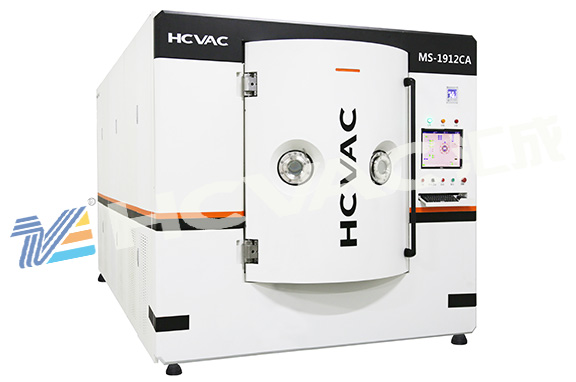Magnetron sputtering vacuum coating machine coating process is ubiquitous in the coating industry. As long as it comes to coating technology, everyone will immediately think of magnetron coating process. Magnetron sputtering vacuum coating machine is also sought after by major manufacturers. Magnetron sputtering The sputtering coating process is even more loved by everyone. Today, Huicheng Xiaobian will introduce the coating process of the magnetron sputtering coating machine to you.

In fact, from the general metal target sputtering, reactive sputtering, bias sputtering, etc., along with the industrial demand and the emergence of new magnetron sputtering technology, low-pressure sputtering, high-speed deposition, self-supporting sputtering deposition, multiple surface engineering And new processes such as pulse sputtering have become the current development trend in this field. The key problem of low pressure sputtering is that under low pressure (generally refers to <011Pa), the collision probability of electrons and gas atoms is reduced, which is insufficient to maintain the glow discharge on the surface of the target in conventional magnetron sputtering technology, resulting in sputter deposition. Unable to proceed. By optimizing the design of the magnetic field, the electron space travel distance is extended, and the non-equilibrium magnetron sputtering technology can realize sputter deposition under the vacuum of 10-2Pa level. In addition, sputter deposition at lower pressure can be achieved by constraining the electron movement by an external electromagnetic field. High-speed deposition can greatly improve work efficiency, reduce working gas consumption, and obtain new types of films. The main problem that needs to be solved in realizing high-speed deposition is to increase the current density of the target material without generating arc discharge; due to the increase of the power density, the cooling capacity of the target material and the substrate needs to be improved accordingly. At present, the target power density exceeds 100W/cm2 and the deposition rate exceeds 1μm/min.
Utilizing high-speed deposition holds attractive promise as an alternative to conventional electroplating. In the process of high-speed deposition, by increasing the ionization rate of sputtering particles, it is possible to maintain discharge deposition without introducing working gas, that is, to form self-supporting sputtering deposition. Self-supporting sputtering deposition plays an important role in improving the adhesion between thin films and substrates, eliminating internal defects in thin films, and preparing high-purity thin films. The combination of magnetron sputtering technology and other surface engineering technologies is another main direction of the development of magnetron sputtering technology. Although magnetron sputtering technology has many advantages, it still occupies a small share in the field of industrial surface engineering, and traditional surface technology still occupies a dominant position. One of the main reasons affecting its application is that substrate materials such as low-alloy steel and titanium alloys are too soft to match with the superhard and other functional thin films obtained by sputtering technology. In contrast to very hard coatings, the substrate is too soft to withstand the loading pressure. Conversely, for corrosion-resistant applications, pinhole defects can lead to coating failure. In order to overcome such problems, multiple surface engineering techniques have been developed, that is, using several surface engineering techniques to modify the surface of the material in turn, the obtained surface modification layer has the incomparable advantages of a single surface technique. Nitride first, then sputter deposition is a typical example. Nitride provides a subsurface with a thickness of 500μm and a hardness of 10GPa, and then deposits 3-5μm TiN; TiN provides high wear resistance of the material, and the Nd layer provides High load-bearing and fatigue resistance.
The above is a more professional introduction to the price comparison of the coating process of the
magnetron sputtering vacuum coating machine. Newcomers who have just entered the industry may not understand this, but it does not matter. With the accumulation of experience, they will gradually understand.



